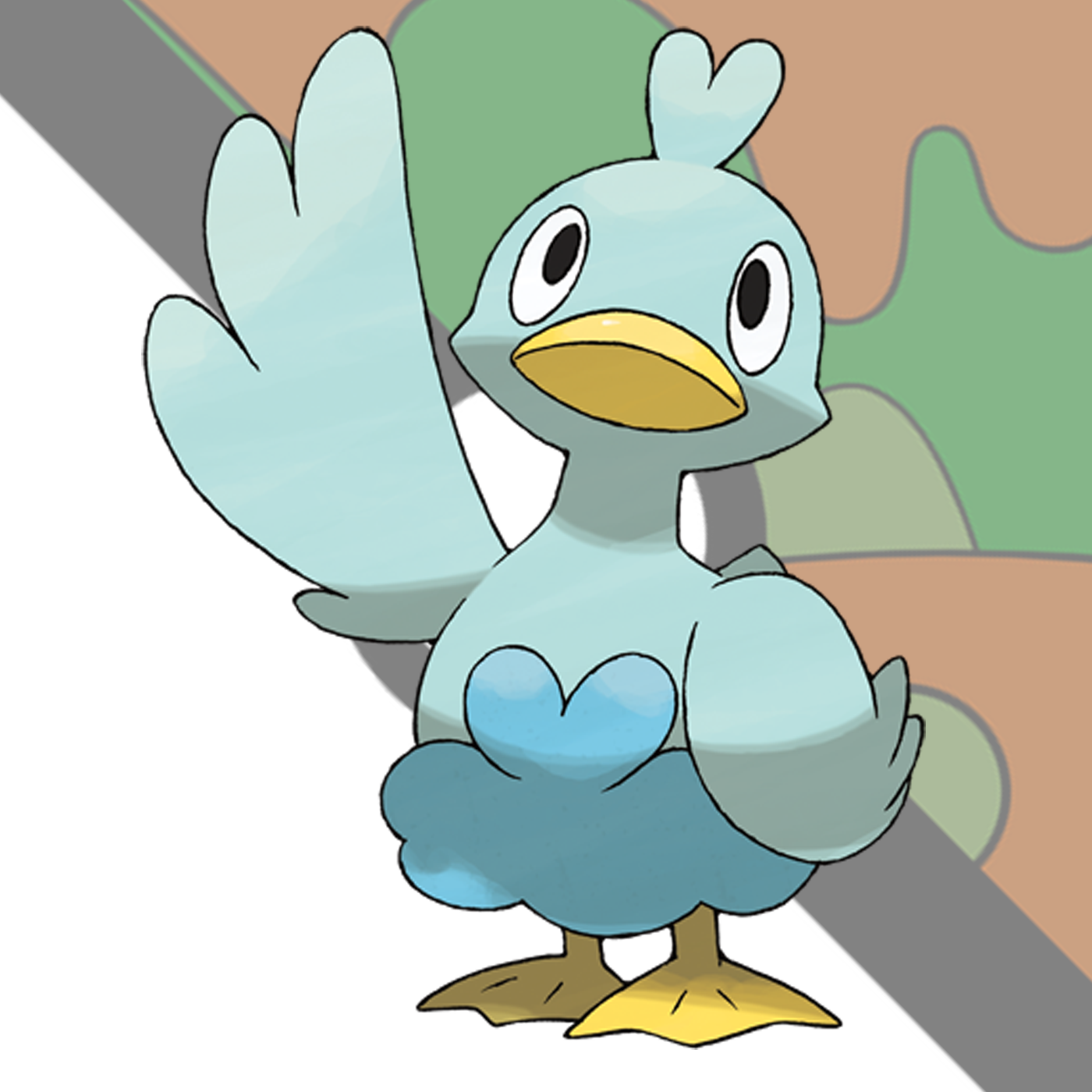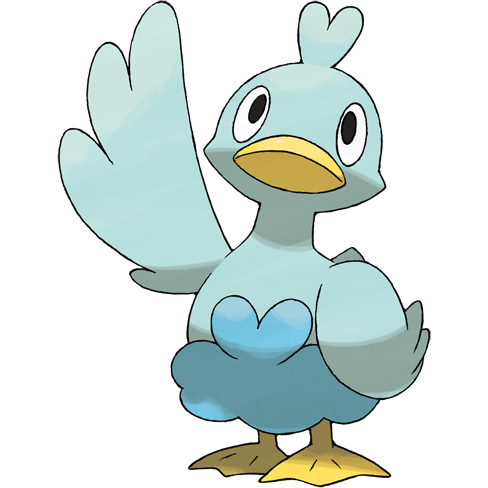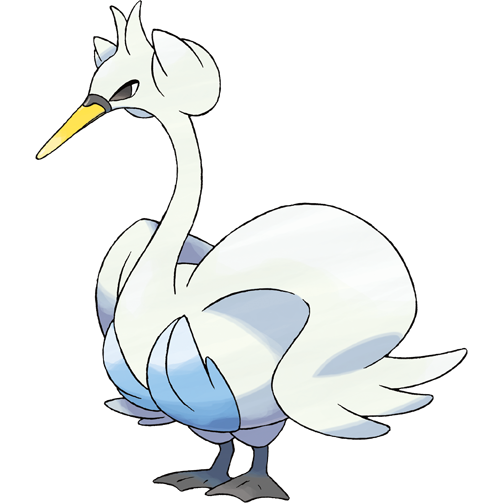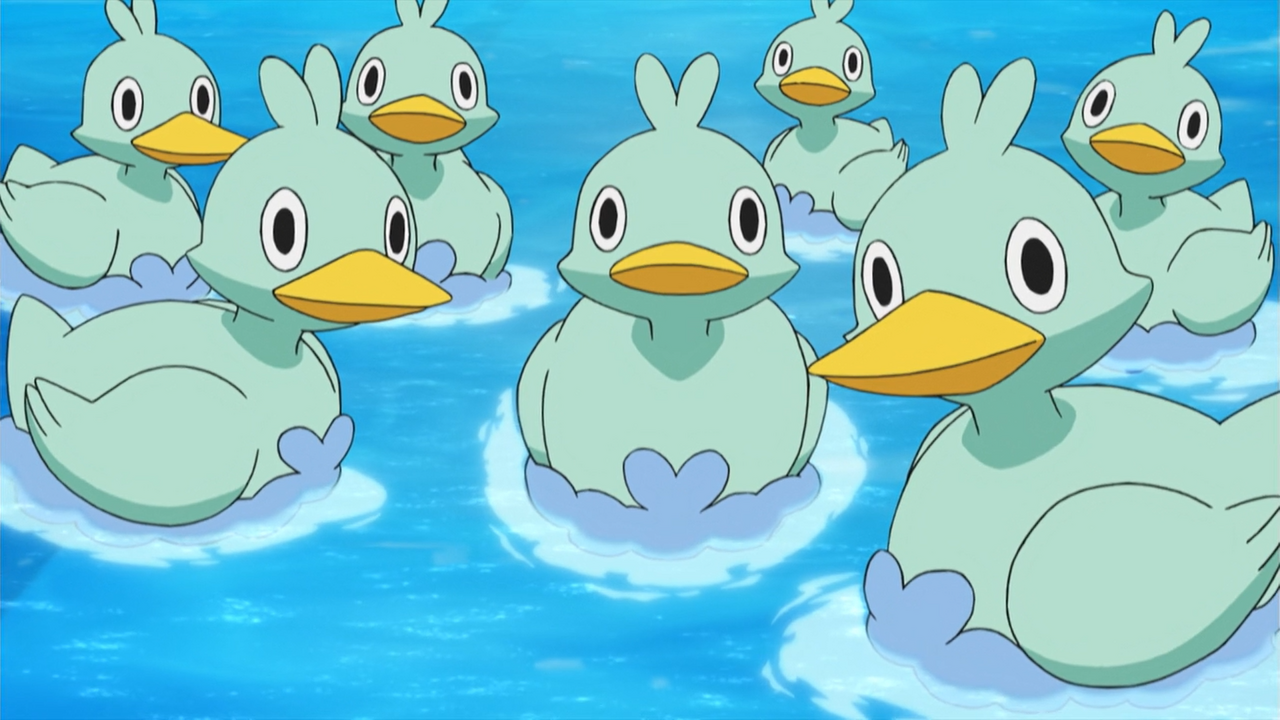Safari Ball - The Story of Ducklett

Welcome to Safari Ball, a field guide series that explores how Pokémon evolve through behavior, emotion, and environment.
There’s a stillness that settles over the wetlands just before dusk. The water ripples softly, reflecting the amber sky and then you see them. First, a young Ducklett paddling near the reeds, shaking water from its downy feathers. And above, in wide gentle arcs, a group of Swanna begins to glide in the sky, wings catching the last golden light like silk. Some creatures grow through force. But Ducklett? It grows through imitation, watching, listening, copying. This line of Water and Flying-type Pokémon invites us into a subtle kind of transformation, born of patience, mimicry, and the art of becoming.
🌊Want to dive deeper on the personality traits of a Water-type?
Ducklett
"They are better at swimming than flying, and they happily eat their favorite food, peat moss, as they dive underwater."
—Pokemon White 2
Ducklett live along ponds and slow moving rivers, where they spend their days paddling, diving, and, most importantly, watching. They’re not strong fliers yet, their wings aren’t ready. So they study, they watch the flocks overhead, they memorize the steps their Swanna parents take. Just like a child learning how to walk, Ducklett copies what it sees, not just to move, but to become. It learns rhythm by watching others dance. It learns safety by following the ones who guide it. As Pokémon Scarlet shares, “It’s not very good at flying yet. It watches the dances of its Swanna parents to learn how to move its wings.” This act of mimicry is more than survival, it’s identity. It’s like watching a parent cook, laugh, or hold someone with care. Through observation, Ducklett forms its own sense of how to belong in the world.
Its three abilities reflect different sides of its young personality. Keen Eye means Ducklett notices everything, no detail is too small. It learns by noticing what others might miss. Big Pecks speaks to courage. Even when it’s small and soft, Ducklett protects its space and doesn’t let fear clip its wings. Hydration shows how this Pokémon thrives in emotion-rich environments. Rain doesn’t weaken it; it heals in it.
But here’s the beautiful contrast. Ducklett is an excellent diver, even before it can fly. As Pokémon Black explains, “These bird Pokémon are excellent divers. They swim around in the water eating their favorite food, peat moss.” It excels below the surface, where pressure is quiet, movements are subtle, and strength is built through resistance. And when threatened, it doesn’t attack. Instead, it sprays water from its feathers to confuse its foe and dive to safety. Escape is its strategy, not because it’s weak but because it knows when to protect its growth.
And maybe that’s what Ducklett teaches us. You can be skilled in one area while still growing in another. You can shine underwater while still reaching for the sky. And when the time is right, you rise.
Swanna
"Swanna start to dance at dusk. The one dancing in the middle is the leader of the flock."
—Pokemon Black
When Ducklett evolves at level 35, it becomes Swanna, the swan-like Pokémon whose elegance hides the power it’s quietly trained for all along. Swanna flies at dawn and dances at dusk. These rituals aren’t just for show, they’re how the flock stays together. As Pokémon Scarlet explains, “Centered around its leader, the flock dances in perfect sync to strengthen its unity.” What makes this so powerful is what came before. Each Swanna once trained alone, watching, copying, failing, repeating as Ducklett. That quiet effort, practiced in solitude by every Ducklett, becomes the language of unity when they meet again in the air. The dance is only possible because every member practiced their steps when no one else was looking.
Swanna’s grace carries real strength. Its long neck becomes a weapon, striking with sharp precision. As Pokémon White notes, “It administers sharp, powerful pecks with its bill. It whips its long neck to deliver forceful repeated strikes.” And yet, this power doesn’t erase its softness. Swanna is still a symbol of beauty, not just in how it moves, but in how it moves others. Pokémon Violet shares, “It’s said that many artists have taken inspiration from the sight of Swanna performing a beautiful dance in the light of dawn.” Swanna doesn’t just fly, it awakens something in those who see it. In a world of noise, its presence invites quiet. In a world of chaos, it models coordination. Swanna gives others the gift of inspiration not by trying to be noticed but by embodying grace so fully that others can’t help but feel it.
And maybe that’s the real power of Swanna’s story. It teaches us that grace isn’t just about beauty, it’s about belonging. It’s about learning the steps, practicing them in the background, and then one day stepping into the spotlight, not to show off, but to bring others into the dance.
Ducklett used Rain Dance
Ducklett and Swanna show us that not all growth is loud. Sometimes it looks like quiet watching. Like copying someone you love until you find your own rhythm. Ducklett reminds us how important models are, how being seen gives us something to grow toward. Swanna reminds us that grace doesn’t mean weakness. It’s the strength to move with purpose and inspire others while doing it. To grow into something beautiful doesn’t mean forgetting where you started. It means carrying those ripples into the air. And when you find your rhythm, like Swanna at dusk, you don’t fly alone.
You lead the dance.
🎧 Want stories about the real lives of Pokémon trainers?
🎙️ Check out my podcast where I interview everyday Pokemon fans, collectors, and players!
▶️Available here or your favorite podcast app!




